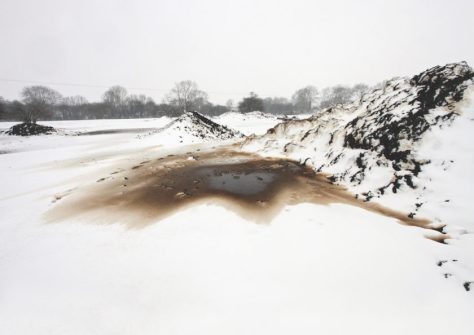Much, if not all photography is a way of looking at memory. Your memory, your family’s memory, the collective memory. A memory of a person or the memory of a place. Photos taken today will become memories for the future. Photographs are one way of engaging with the past. Marianne Hirsh uses the phrase ‘points of memory’ (Hirsh, 2012) to describe this. This memory can be personal – but does not have to be. Remembering the past, before you were even born, is a way of paying homage to it. Hirsh calls that ‘postmemory’ and discusses it in her book Family Frames together with other forms of describing memory and how images can be read in the context of the family. See Marianne Hirsch – Family Frames for an extended review of the book.
Annette Kuhn in Family Secrets talks about the way photographs trigger memory, both personally – in a photograph of herself as a child and collectively – in the photograph of a burning London with St. Pauls set against the smoke. See Annette Kuhn – Family secrets for an extended review of her book.
Keith Roberts’s work on the Hardman Portraiture Collection of images of mainly servicemen discusses how memory can be personal or collective (postmemory) and can also be direct (something you remember) or a family memory. This memory can be invoked by photographs, which Roberts’s notes can be both an act of recall and an act of mourning. It also references Boym’s work on nostalgia (Boym, 2016) which again can either be reflective (looking at personal and historical past – how the images impact on the families of the servicemen) or restorative (looking a national past – in this instance how the images evoke WWII and its effect on the national thought and memory).
A recent book Project Cleansweep by Dara McGrath (McGrath, 2010) also talks about memory, in this case how the land holds memories and how images can reveal them. War Sand by Donald Weber (Weber and Frolicking, 2018) talks at length about the memories held by the beaches of the Normandy invasion in WWII. He uses a combination of present images, stories and microanalysis of sand samples to tell the story of the invasion and the lives lost.
Memories can also be highly personal. Lesley McIntyre, whose daughter was born with a muscular abnormality that impacted both on what she could do and how long her life was likely to be, started documenting her life in photographs from when she was born and continued until her untimely death age 14. The book – The Time of her Life is a poignant memorial to a life lived fully (McIntyre, 2004).
A quick look at my shelves warns me that this list of books about memories could become extremely extensive – enough that it reminded me of where I started thinking about memory – much, if not all photography is a way of looking at memory. Making worthwhile memories is critical, hard and important both for myself and my family.
Reference list:
Boym, S. (2016) The future of nostalgia. New York: Basic Books, A Member Of The Perseus Books Group, Dr.
Hirsch, M. and Harvard University Press (2016) Family frames : photography narrative and postmemory. Cambridge, Mass. ; London: Harvard University Press, Dr.
Kuhn, A. (2002) Family secrets : acts of memory and imagination. London ; New York: Verso.
Mcgrath, D. (2020). Dara McGrath Project Cleansweep. Beyond the Post Military Landscape of the United Kingdom. Heidelberg, Neckar Kehrer Heidelberg.
Mcintyre, L. (2004) The time of her life. London: Jonathan Cape.
Roberts, K. (s.d.) ‘There Then : Here Now – Photographic Archival Intervention within the Edward Chambre Hardman Portraiture Collection 1923-1963’ At: https://www.academia.edu/12049291/There_Then_Here_Now_-_Photographic_Archival_Intervention_within_the_Edward_Chambre_Hardman_Portraiture_Collection_1923-1963?auto=download (Accessed on 24 March 2020)
There Then, Here Now (s.d.) At: https://hardmanportrait.format.com/ (Accessed on 24 March 2020)
Weber, D. and Frolick, L. (2018) War sand. (s.l.): Polygon.


